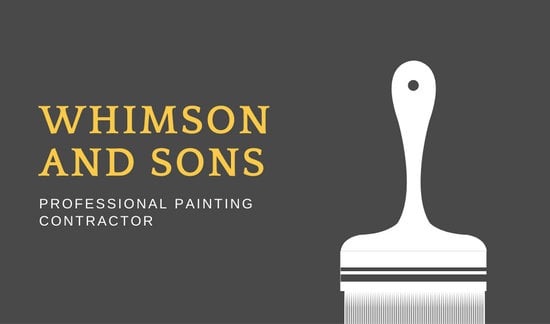Explore The Impact Of Seasonal Components On The Efficiency Of Industrial External Paint And Identify The Optimum Times To Accomplish Long-Lasting Outcomes For Your Task
Explore The Impact Of Seasonal Components On The Efficiency Of Industrial External Paint And Identify The Optimum Times To Accomplish Long-Lasting Outcomes For Your Task
Blog Article
Content Writer-Doherty Urquhart
When you're preparing an industrial external paint job, seasonal variables can make or break your results. You'll want to take into consideration exactly how temperature and humidity effect paint application and drying times. Choosing the appropriate season can guarantee your paint adheres correctly and lasts much longer. But which periods are truly the most effective for this kind of work? Let's check out the key elements that can affect your task's success.
The Influence of Temperature on Paint Application
When you're intending a commercial external painting project, the temperature can significantly impact just how well the paint adheres and dries.
Preferably, you want to paint when temperature levels range between 50 ° F and 85 ° F. If it's as well chilly, the paint may not heal properly, causing issues like peeling off or fracturing.
On the flip side, if it's also hot, the paint can dry also rapidly, stopping correct attachment and resulting in an irregular surface.
You need to also think about the time of day; morning or late afternoon supplies cooler temperature levels, which can be extra positive.
Always inspect the maker's suggestions for the specific paint you're making use of, as they typically give guidance on the excellent temperature level variety for ideal results.
Moisture and Its Impact on Drying Times
Temperature isn't the only environmental aspect that affects your industrial outside paint job; moisture plays a significant duty too. High moisture levels can slow down drying out times drastically, impacting the general quality of your paint task.
When the air is filled with moisture, the paint takes longer to heal, which can result in issues like inadequate adhesion and a higher risk of mold development. If you're repainting on an especially damp day, be planned for extended wait times between layers.
It's important to keep track of neighborhood climate condition and strategy as necessary. Ideally, aim for humidity degrees between 40% and 70% for optimum drying.
Keeping these factors in mind ensures your project stays on track and supplies an enduring surface.
Best Seasons for Commercial Exterior Painting Projects
What's the very best season for your business outside painting tasks?
Springtime and very early fall are commonly your best bets. Throughout these seasons, temperatures are light, and moisture levels are typically reduced, developing optimal conditions for paint application and drying out.
Avoid https://www.finehomebuilding.com/project-guides/painting/on-site-spray-finishing , which can create paint to completely dry as well quickly, resulting in inadequate bond and coating. Likewise, wintertime's chilly temperature levels can hinder proper drying and curing, taking the chance of the durability of your paint task.
Aim for days with temperatures in between 50 ° F and 85 ° F for optimum results. Keep in mind to check the neighborhood weather report for rain, as damp problems can wreck your project.
Preparation around these elements ensures your paint task runs efficiently and lasts much longer.
Verdict
In conclusion, planning your industrial outside paint jobs around seasonal factors to consider can make a significant distinction in the result. By organizing job during the optimal temperature levels and humidity degrees, you'll make certain better bond and drying times. Keep in strate line to watch on regional weather forecasts and choose the right time of year-- springtime and early autumn are your best bets. Taking these actions will certainly aid you accomplish a durable and expert coating that lasts.
